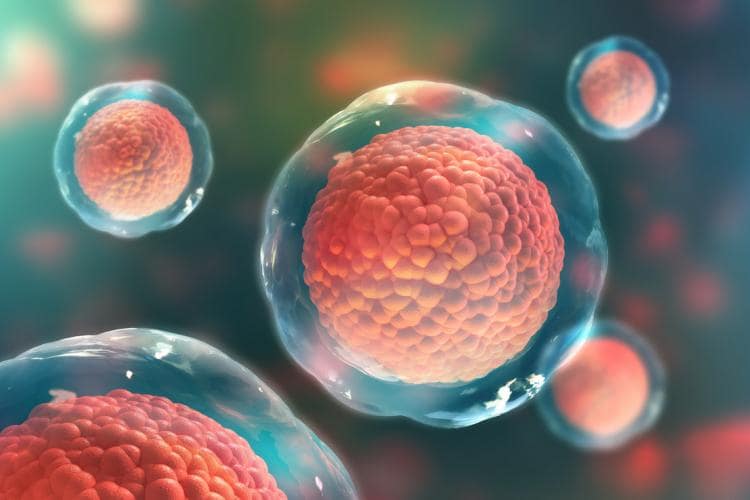Goodbye Stem Cells?
The stem cell tsunami overwhelming all of medicine is evolving. Where once it was thought that these cells could morph into anything and cure everything, our new understanding of their behavior will change how they are used. Here is where we are on the learning curve:

Stem cells from embryonic tissue are the primordial cells from which all tissues in all animals grow. These pluripotent cells contain the genetic information and cellular machinery that develops into the healthy tissues that make up our organs—and the unhealthy ones that create tumors. Guiding their evolution is the primordial soup that they live in and the genetic programming it contains. The use of these cells in medicine is severely restricted, due to religious beliefs as well as political issues—overlaid with ethical questions and the fear that new humans, built by mad designers, will overrun the world.
Once the embryo has grown into a fetus, the cells found surrounding the fetus, which are unique to the amniotic fluid, have another level of potency. These amniotic fetal cells and the growth factors and cytokines in the fluid guide this stage of development with potent anabolic, anti-inflammatory, anti-scarring, and antibiotic behaviors. They are the reason the mother’s body does not reject the fetus, even though the fetus is genetically only half the mother (except of course in the case of immaculate conception).
One step further along in the development pathway are the daughters of stem cells called progenitor cells. Some are programmed to develop into tissues such as bone, cartilage, and soft tissues, the mesenchyme of the body. Others are found on the walls of blood vessels, waiting to spring into action when injuries occur. Vascular tissues, such as fat and bone marrow, have the largest number of these cells.
The tsunami of stem cell optimism and application occurred because scientists and physicians hoped that by injecting these cells into various injured organs—such as the heart, the spinal cord, or the knee joint—the injured tissues would re-grow under the influence of the magical cells. So far, this hope has turned out to be only partially true.
The current understanding, based on a sequence of well-controlled studies, reveals that progenitor cells exert their influence in adults by releasing packets of information, called exosomes and vesicles. The exosomes are made by the machinery inside the cell and vesicles are part of the cell fluid and cell wall. So it is these delivery vehicles of the cells rather than the cells themselves that modulate the environment of injury to stimulate the repair and when possible the regeneration of new tissue. These packets contain a large variety of growth factors and messenger RNA, the coding units of genetic information, that then merge with local cells at the site of an injury. The information packets stimulate those cells to induce healing, reduce scarring, delay apoptosis or early death, and restore health.
Many studies have noted that without millions of progenitor cells the tissue healing effects are not as effective. Thus, there have been furious efforts to grow more cells in culture prior to implanting them. However, with our emerging understanding that the tip of the spear in healing is not the cell itself but the weapons contained inside it, a whole new effort to isolate and manufacture those elements is underway.
Just as it takes a village to grow a healthy child, it will most likely take all of the cellular and growth factor players involved in injury and tissue regeneration to rebuild an entire organ or to cure arthritis. For now, our clinical strategy is to inject a mixture of hyaluronic acid (the lubricant of the joint), and growth factors from the platelets of the patient’s blood. This growth factor and lubrication therapeutic approach most closely represents that primordial chicken soup from which all sprang. Such injections may or may not be more targeted in the future.
The most fascinating part of this story is that almost no one has been hurt by the partial successes achieved so far. There have been no downsides (except cost) to the wonderful aggressive efforts to heal people with nature’s tools. And with the enthusiasm for this research felt by our team and many others, progress will be steady. You may look forward to sliding into the home plate of life a little worse for wear, but with a healthy smile.
